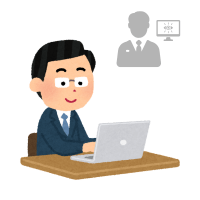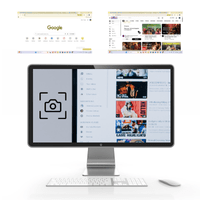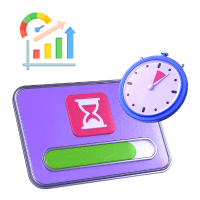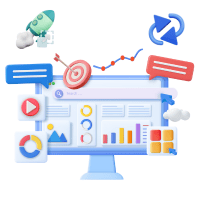In the evolving world of hybrid workplaces and remote teams, choosing the right tracking tool can make or break productivity. Often, people ask about the key differences between Workplace Tracking vs. Time Tracking Tools—two terms that sound similar but serve distinct purposes. Understanding how they compare can help business owners, HR managers, and team leads make smarter investments. In this guide, we explore how each tool works, what makes them unique, and which scenario each is best suited for, giving you clarity to boost efficiency across your organization.
What Is Workplace Tracking Software?
Describing Workplace Tracking vs. Time Tracking Tools, the first half of that pairing is all about visibility into employee behavior. Workplace tracking software is crafted to monitor digital activity—what applications employees open, which websites they visit, how long they stay idle, and more. Unlike time tracking tools that rely on user input, workplace tracking often happens automatically in the background. This software is particularly effective for managing remote or hybrid teams because leaders get real-time dashboards and insights. It helps pinpoint inefficiencies, detect time-wasting patterns, and provide data that can guide performance reviews and workflow optimization.
Real‑Time Activity Monitoring
Provides live visibility into what employees are doing on their devices. Managers can see usage trends, spot idle time, and ensure activities align with business goals.
Website & App Usage Insights
Logs which websites and applications employees use and for how long, giving a clear picture of productive vs. distracting digital behavior.
Idle vs. Active Time Tracking
Automatically detects when a user is idle or active and differentiates between productive and non-productive hours without manual input.
Productivity Scoring & Analytics
Calculates productivity scores based on app usage, active time, and task engagement, helping compare performance across teams or individuals.
Privacy Compliance & Consent Options
Includes opt‑in screens, blurred screenshots, and consent features to ensure the tool is used ethically and legally under regulations like GDPR or local data laws.
Read Also: Project Management vs Time Tracking: Which One Do You Need in 2025?
What Is a Time Tracking Tool?
Make your workday more productive
Time tracking and work management can help you reach your goals
faster.
On the other side of the coin, when comparing Workplace Tracking vs. Time Tracking Tools, a time tracking tool zeroes in on logging hours spent on tasks and projects. Instead of capturing background activity, these tools depend on employees or contractors to start timers or manually input hours. They excel in billing, invoicing, and payroll purposes. Freelancers, agencies, and service-based teams often choose time tracking tools for their simplicity and accuracy in recording billable work. When integrated with project management or accounting tools, they streamline workflows and reduce billing errors.
Task‑Based Time Logging
Allows users to start and stop timers or manually log the time spent on specific tasks or client projects, which is ideal for billing or task tracking.
Auto‑Generated Timesheets
Automatically compiles tracked hours into weekly or monthly reports for easier review, client updates, or payroll processing.
Billing & Invoicing Features
Transforms logged hours into invoices or billing reports, often with rates per hour, discounts, or billing cycles built in.
Mobile & Web Accessibility
Offers mobile apps or browser extensions, allowing tracking from anywhere—a key benefit for freelancers and remote workers.
Reminders & Timer Notifications
Sends notifications to start or stop timers, and prompts users to submit timesheets to improve accuracy and reduce forgotten entries.
Workplace Tracking vs. Time Tracking Tools: Quick Comparison Table
When evaluating Workplace Tracking vs. Time Tracking Tools, it’s useful to compare their core differences side by side.
| Feature | Workplace Tracking Software | Time Tracking Tools |
| Focus | Employee behavior & productivity analytics | Time spent on projects or clients |
| Ideal Users | Remote/hybrid office teams | Freelancers, agencies, and billable teams |
| Tracking Method | Passive, automatic monitoring | Manual or semi-automated timer logging |
| Main Purpose | Performance insights & compliance | Accurate billing, payroll, and workload management |
| Examples | DeskTrack, Hubstaff, Teramind | DeskTrack, Toggl, Harvest, Clockify |
Purpose & Scope
Workplace tools focus on monitoring productivity patterns, while time tracking tools focus on precise recording of hours worked.
Data Captured
The former captures digital behavior logs, while the latter captures task and duration data tied to billing or internal tracking.
Intended Usage Scenarios
Workplace tracking is ideal for oversight and efficiency, and time tracking is best for billing, project estimation, and time accountability.
Automation Level
Workplace tracking works with minimal user intervention; time tracking often relies on manual actions.
Legal & Ethical Considerations
Workplace tracking requires transparency and compliance policies, whereas time tracking is generally seen as user-controlled and less intrusive.
Workplace Tracking vs. Time Tracking Tools: Use Cases and When to Use Each
Understanding Workplace Tracking vs. Time Tracking Tools requires knowing which tool fits your particular context and use case.
Remote Teams with Lack of Visibility
Workplace tracking software offers managers oversight into what people are doing throughout the day, without constant check-ins.
Freelancers or Client‑Focused Work
Time tracking tools enable accurate billing per task or project, making invoicing straightforward and fair.
Field Staff or Mobile Teams
Workplace tracking with GPS integration helps track field routes, job sign-ins, and task completion logistics.
HR & Attendance Management
Both tools can feed into HR systems—workplace tracking for compliance logs, time tracking for attendance, and payroll.
Agency or Creative Teams
Time tracking tools work well to log billable hours, track multiple projects, and manage client budgets.
Workplace Tracking vs. Time Tracking Tools: Pros and Cons
To decide between Workplace Tracking vs. Time Tracking Tools, compare their advantages and drawbacks based on your team’s needs.
Pros of Workplace Tracking Software
- Provides deep visibility into workflows and productivity
- Identifies time-wasting activities and inefficiencies
- Helps managers make data-driven decisions
- Useful for performance reviews and compliance tracking
- Ideal for remote or hybrid workforce oversight
Cons of Workplace Tracking Software
- It can feel invasive if employees are not informed.
- May require policy creation and legal guidance
- Potentially higher cost than simple time trackers
- Employees may feel monitored more than trusted.
Pros of Time Tracking Tools
- Simple to use and easy to onboard
- Ideal for freelancers and service-based billing
- Transparent to the user and non-intrusive
- Helps track budgets and project timelines accurately
Cons of Time Tracking Tools
- No insight into actual productivity or digital behavior
- Depends on manual inputs—prone to forgetting or errors
- May lead to timesheet padding or inaccurate logs
Cost Considerations
Time tracking tools tend to be more affordable and scalable, while workplace tracking tools bring deeper insights at a higher price—though integration tools like DeskTrack blend both affordably.
Workplace Tracking vs. Time Tracking Tools: Using Both Together

In many cases, the best solution is not one or the other but the combined functionality of Workplace Tracking vs. Time Tracking Tools in one platform.
Hybrid Setup Advantages
You can track the behavior and productivity patterns and also log hours spent on specific tasks or clients, getting the full picture.
Richer Reports & Insights
Combining data from time logs and productivity analytics allows managers to evaluate performance with precision and context.
Simplified Single Dashboard
Using one interface reduces tool fatigue and complexity, managers and teams don’t have to switch between platforms.
Improved Transparency & Trust
Users see what’s tracked and why, and clients or stakeholders get clear updates on time spent and task progress.
Ideal for Managers & Clients
Managers get performance oversight, while clients receive accurate billing or task progress—perfect synergy.
Features of Workplace Tracking vs. Time Tracking Tools in 2025
![]()
When evaluating tools, consider forward-thinking features that reflect modern work needs and emerging user expectations.
AI-Generated Productivity Insights
Look for tools that automatically analyze work patterns, detect trends, and suggest improvements using artificial intelligence.
Fully Mobile & Cross-Platform Usability
Ensure the tool is accessible on web, desktop, and mobile—making tracking seamless across devices and environments.
Seamless Integration with Other Tools
Integrations with project management (like Jira, Trello), communication (Slack, Teams), and HR or payroll systems enhance efficiency.
Tailored Customization & Role-Based Permissioning
Dashboards and reports should be customizable per role, admins, managers, employees—so everyone sees what matters most.
Compliance with Data Privacy & Security Standards
Ensure software adheres to GDPR, CCPA, and other regulations. Check for encryption, anonymization options, and consent management.
Read Also: Top 10 Benefits of Using Hybrid and Remote Employee Monitoring Software in 2025
Workplace Tracking vs. Time Tracking Tools: Why DeskTrack Is the All-in-One Solution
As businesses look for smarter, more efficient ways to manage teams and projects, the debate around Workplace Tracking vs. Time Tracking Tools often ends with one question: can we get the best of both worlds in one platform? That’s exactly where DeskTrack stands out. It bridges the gap by combining advanced activity monitoring with accurate time logging, giving you a single tool that does it all. Whether you’re a startup managing remote employees or an enterprise tracking project hours and employee productivity monitoring, DeskTrack adapts to your needs. Here’s why it’s the ideal all-in-one solution.
Tracks Time and Behavior Together
DeskTrack doesn’t just log hours, it also captures app usage, website activity, idle time, and document engagement, giving you a full view of how time is being spent.
Supports Hierarchical Access for Teams & Clients
From employees and managers to external clients, DeskTrack allows controlled access based on roles, so everyone sees the right data with complete transparency.
Real-Time Dashboards and Reports
You get up-to-the-minute analytics on productivity, attendance, and project timelines, all in one clean interface, accessible anytime, anywhere.
Seamless Billing and Timesheet Management
Automatically converts tracked time into accurate timesheets and invoices, perfect for agencies, service teams, and client-based billing.
Scalable and Secure for Any Organization
Whether you’re a 5-person startup or a 500-employee enterprise, DeskTrack scales with your growth and complies with data privacy laws across regions.
Conclusion
Deciding between Workplace Tracking vs. Time Tracking Tools comes down to your business needs. If you prioritize oversight, behavioral insights, and productivity data, workplace tracking software is ideal. If your goal is transparent billing, task-based logging, or freelancer management, then time tracking tools serve you well. However and this is becoming the smart standard tools like DeskTrack combine both approaches, offering real-time productivity insights and task hour logs in one platform. This hybrid strategy not only reduces tool clutter but also enables better decision-making and stronger team collaboration. Choose the system that aligns with your team’s workflow and objectives, and you’ll see improved performance, accountability, and clarity across the board.
Frequently Asked Questions (FAQ)
Q1. Can time tracking tools gauge employee productivity?
Ans. No, they can track hours but don’t provide insights into behavior or distractions, they focus purely on logged time.
Q2. Are workplace tracking tools legal to use?
Ans. Yes, if employees are informed, consent is obtained, and you comply with data protection laws like GDPR or local regulations.
Q3. Which tool is best for client billing accuracy?
Ans. Time tracking tools are more appropriate since they capture exact hours logged per task or client.
Q4. Can a single platform offer both tracking types?
Ans. Absolutely, DeskTrack and similar solutions integrate behavior monitoring with task time logging in one tool.
Q5. Do workplace tracking tools require technical setup?
Ans. Not necessarily—many are plug-and-play with guided onboarding and minimal IT involvement.










